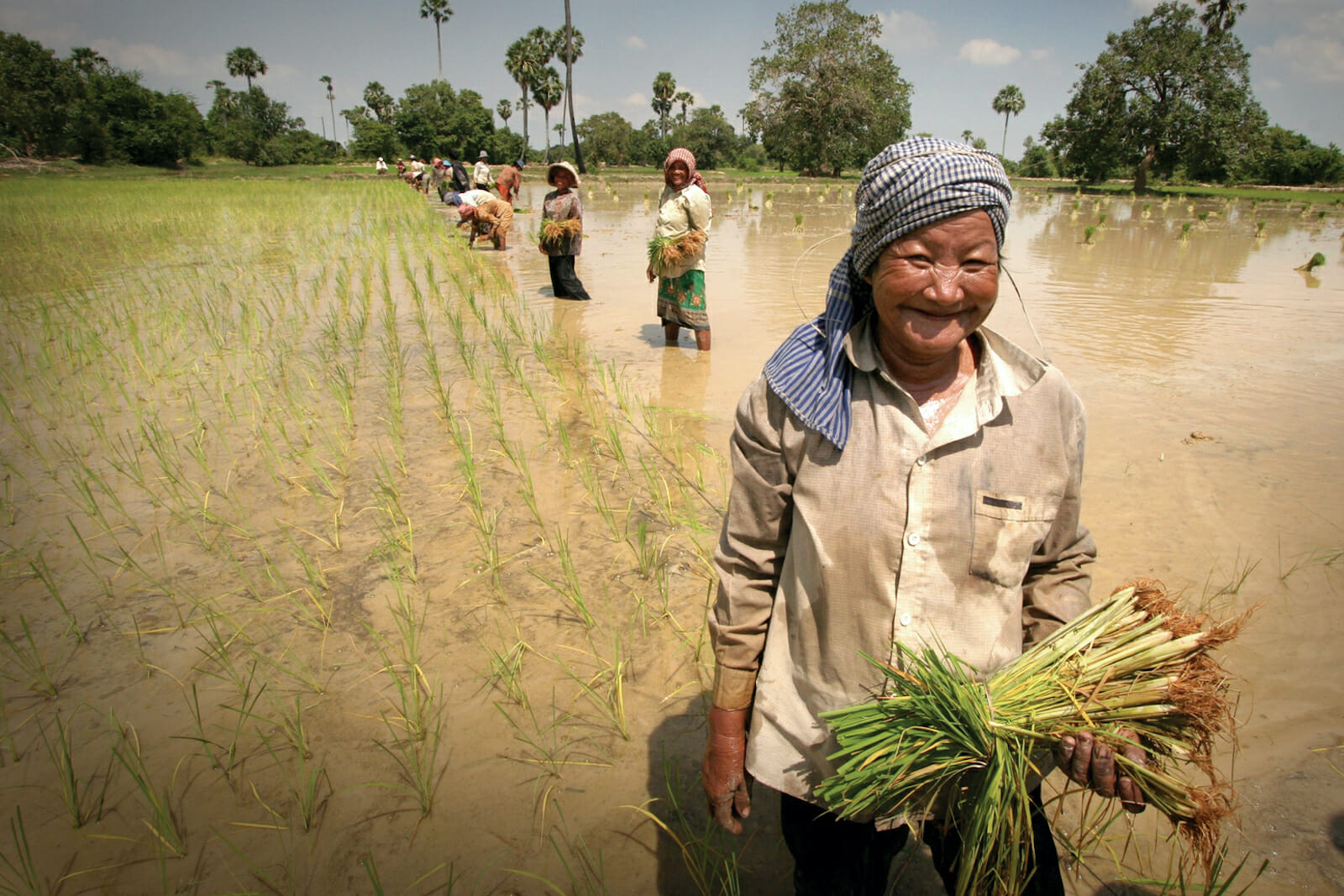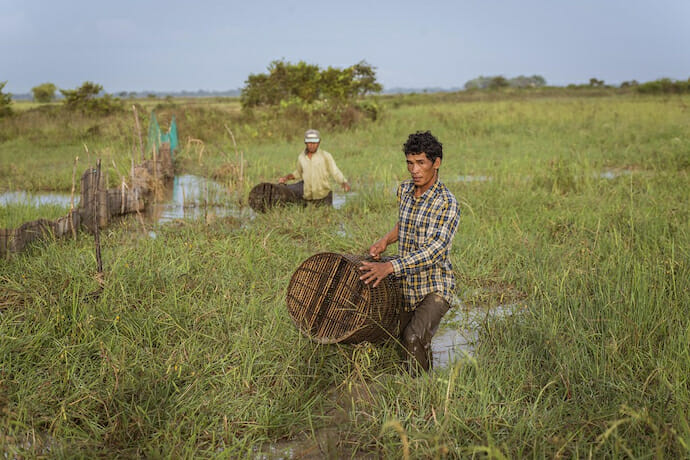
Cambodian Farmers and Agrochemicals: A Case Study in Three Districts in Svay Rieng Province
Cambodian farmers are largely dependent on rice cultivation, which is a key contributor to their livelihoods. Around 76% of Cambodians live rural lifestyles, with the agricultural sector making up around 21% of the country’s GDP. This is a decline from 33% in 2009. 17.6% of Cambodians live in poverty, according to the United Nations. This article reflects findings conducted with 289 farmers in Svay Rieng province, located in the southeastern part of the country.
In the past, Cambodian farmers commonly used cow dung/animal waste or decomposed fertilizers for rice cultivation. The majority of farmers now apply excessive use of chemical fertilizers to cultivate rice and they typically lack a proper understanding of its harmful effects. Despite the over-use of chemical fertilizers, technical support from local authorities on their harmful effects is limited.
Cambodian farmers have moved away from subsistence farming to more commercial farming, in order to produce rice with higher yields, which is understandable given the high rates of poverty. Cambodian farmers have changed their attitudes towards environmental best practices and sustainability. They have embraced more intensive methods of using pesticides, herbicides, fungicides, and nematicides. According to the survey, nearly 99% of respondents used chemicals imported from Vietnam, Thailand, domestic products, and locally-made fertilizers for rice cultivation. Nearly 91% of respondents used pesticides, herbicides, fungicides, and nematicides.
Further, respondents were not able to read instructions written in Vietnamese and Thai and lacked proper training and capacity building from relevant institutions and stakeholders. Only 12% of respondents received training and capacity building from relevant stakeholders or agencies including private companies (who encouraged farmers to use chemical fertilizers), non-governmental organizations, the Provincial Department of Agriculture (PDoA), and local authorities.

Despite a small proportion of respondents having received training on the impacts of agrochemical fertilizers, the majority of respondents understood the impacts on their health, the environment, biodiversity, their livelihoods, and soil degradation. They knew this from their friends and neighbors. When applying agrochemicals into rice fields, the majority of respondents imitated their neighbors and fellow villagers, without realizing the proper and safe application of the chemicals. Even the majority of respondents who did understand the negative impact of agrochemical fertilizers did not properly apply protection measures. When they applied the fertilizers into their rice fields, they did not wear gloves, masks, or other personal protective equipment. Given the cost of equipment, it is understandable.
The use of agrochemical fertilizers not only affected farmers directly, but it impacted their families, young children, the elderly, and pregnant women. According to the survey, 71% of respondents suffered respiratory damage and 70% of respondents experienced skin infections. Additionally, 36% of respondents experienced bouts of diarrhea. Some of these health problems could not solely be attributed to the use of chemical fertilizers, but respondents seemed to rarely experience having nausea and skin infections before applying agrochemicals.
A large number of respondents expressed a desire to disuse chemical fertilizers, but they do not have an alternative method to produce high crop yields. 89% of respondents were keen on stopping the use of chemical fertilizers altogether. Increasing higher yields requires technical assistance and funds, but most importantly, irrigation infrastructures need to be upgraded. A nationally representative study conducted by CDRI demonstrated that local governments have prioritized infrastructure, but not upgrading irrigation systems.
The location where this study was conducted lacks modern irrigation infrastructure. Most catchments and reservoirs were built by the Khmer Rouge using forced labour. Some systems were even damaged by the prolonged three decades of civil wars and ensuing conflicts. Such infrastructure is scarred and damaged, so farmers only cultivate rice during wetter months. This has made it difficult for multi-cultivated rice or crop rotations per year.
Two recommendations could help to stop the over-use of agrochemical fertilizers. Firstly, relevant stakeholders must educate villagers, taking appropriate actions and protection measures to apply agrochemical fertilizers for rice cultivation or crop rotations. Hazardous agrochemical products imported into the country should be restricted and banned from the market. Secondly, an investment of small-medium scale catchments and irrigation systems for sustainable agriculture needs to be made, so farmers are able to ban and avoid the over-use of agrochemical fertilizers. Implementing these recommendations could help our community be safe from hazardous agrochemical fertilizers.
This article may also contribute knowledge to other areas of agriculture practices like cassava, cashew nuts, and rubber plantations in Cambodia. A visit to Kratie, Ratanakiri, Kampong Thom provinces where cassava, cashew nuts, and rubber plantation are planted revealed that chemical fertilizers are being overused there.

